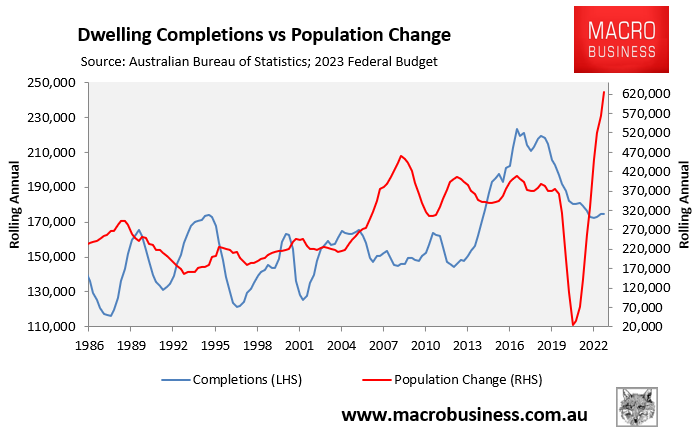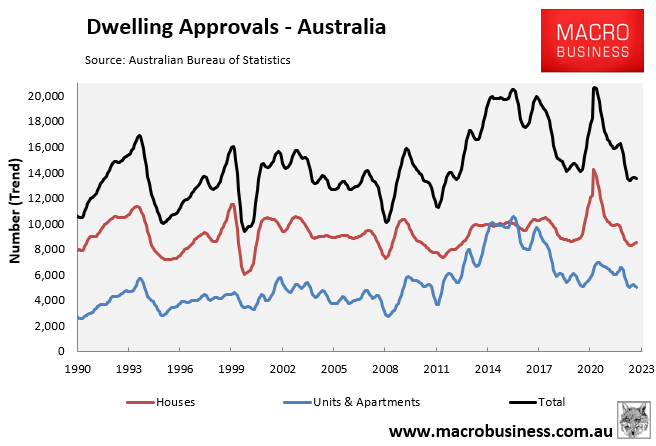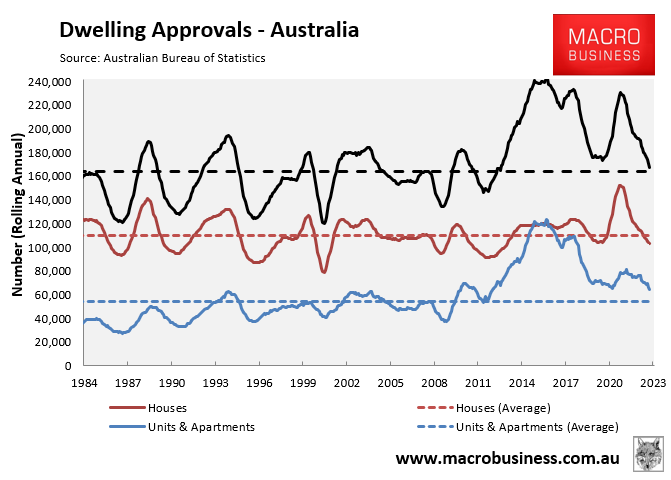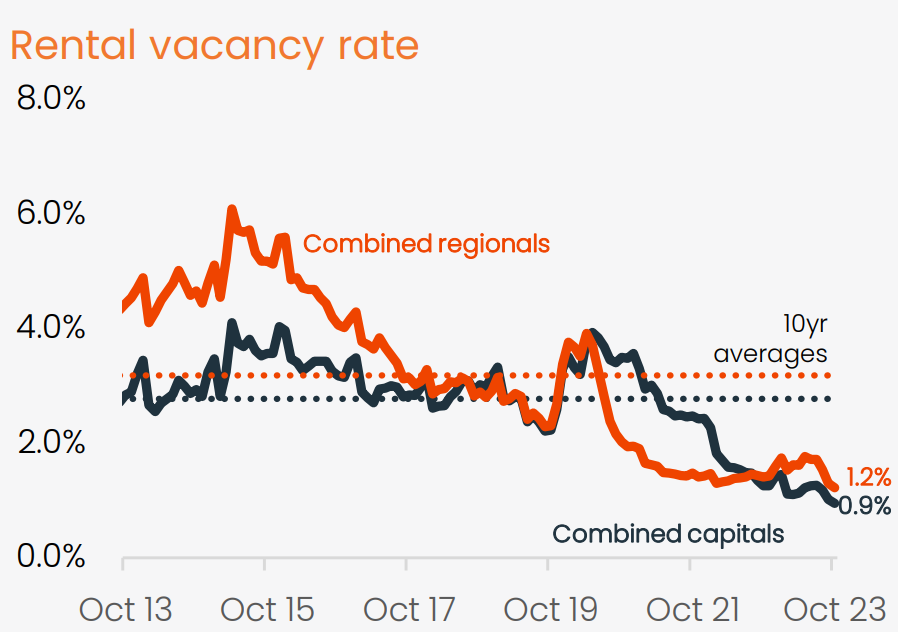There were only 174,400 dwellings constructed in Australia in the 2022-23 financial year against a total population increase of 626,000:

Reflecting that some of the homes built were ‘knock down and rebuilds’ and, therefore, did not add to overall supply, only 169,500 dwellings were added to the nation’s housing stock in the 2022-23 financial year, according to the ABS.
Thus, the current level of housing supply is around 70,000 below the Albanese Government’s 1.2 million homes target, which requires 240,000 new homes per year.
On Wednesday, the ABS released dwelling approvals data for September, which suggested that housing construction rates will continue to fall.
Dwelling approvals fell by 4.6% over the month to 13,144 in September, with the level of approvals around decade lows:

The result badly missed economists’ expectations of a small gain of 2.5%.
Annual dwelling approvals have collapsed to just 164,300, which is around 75,000 fewer than the Albanese government’s target of building 240,000 homes a year:

CBA economist, Harry Ottley summarised the supply situation as follows:
“Trend approvals have been range bound within 13,000-14,000 in 2023. This level is weak, especially on a per-capita basis given strong population growth and on top of shortages in the supply of housing”.
“Completions must average 20,000 per month from July next year to meet Federal Government targets”.
Further interest rate hikes could constrain construction activity further, leading to an even bigger gap between supply and demand.
With net overseas migration running at a record rate of around 500,000 per year, implying population growth of more than 600,000, Australia’s housing crisis can only get worse.

Source: Corelogic
The only solution is to cut net overseas migration to a level that is below the nation’s ability to supply housing and infrastructure. It is patently obvious.

